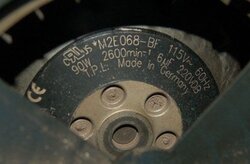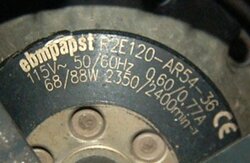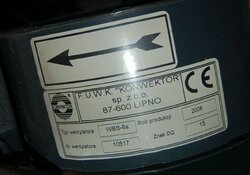At the risk of sounding like a broken record, the new EKO controller, the RK2001UA, allows you to reduce fan output down to 50% in 10% increments. So these are obviously variable speed blowers. I knew that anyway, because the old controller, the RK2001E, modulates the fan speed when the boiler temp approaches the setpoint. Over the past couple of weeks since I put in the new controller, I've found that slowing down the blowers on my boiler results in significant efficiency gains. It's kind of like an overdrive, and nice in that you can fine-tune it for conditions. The only problem is that you set fan speed with a series of menus on the controller. I would prefer to be able to set it with a dial.
So my question is this: Can you modulate these blowers with a dimmer switch? And if so, how low could you dial it down to before burning out the motor?
So my question is this: Can you modulate these blowers with a dimmer switch? And if so, how low could you dial it down to before burning out the motor?





